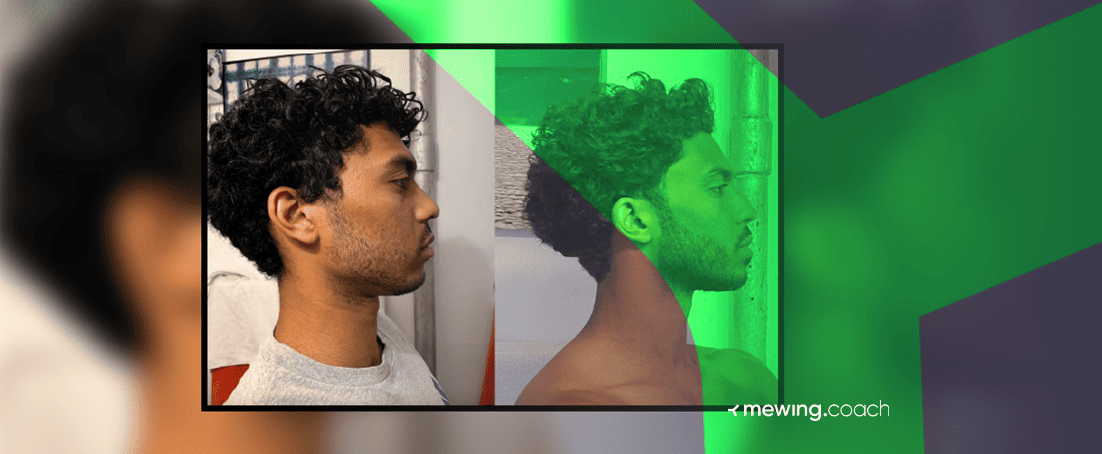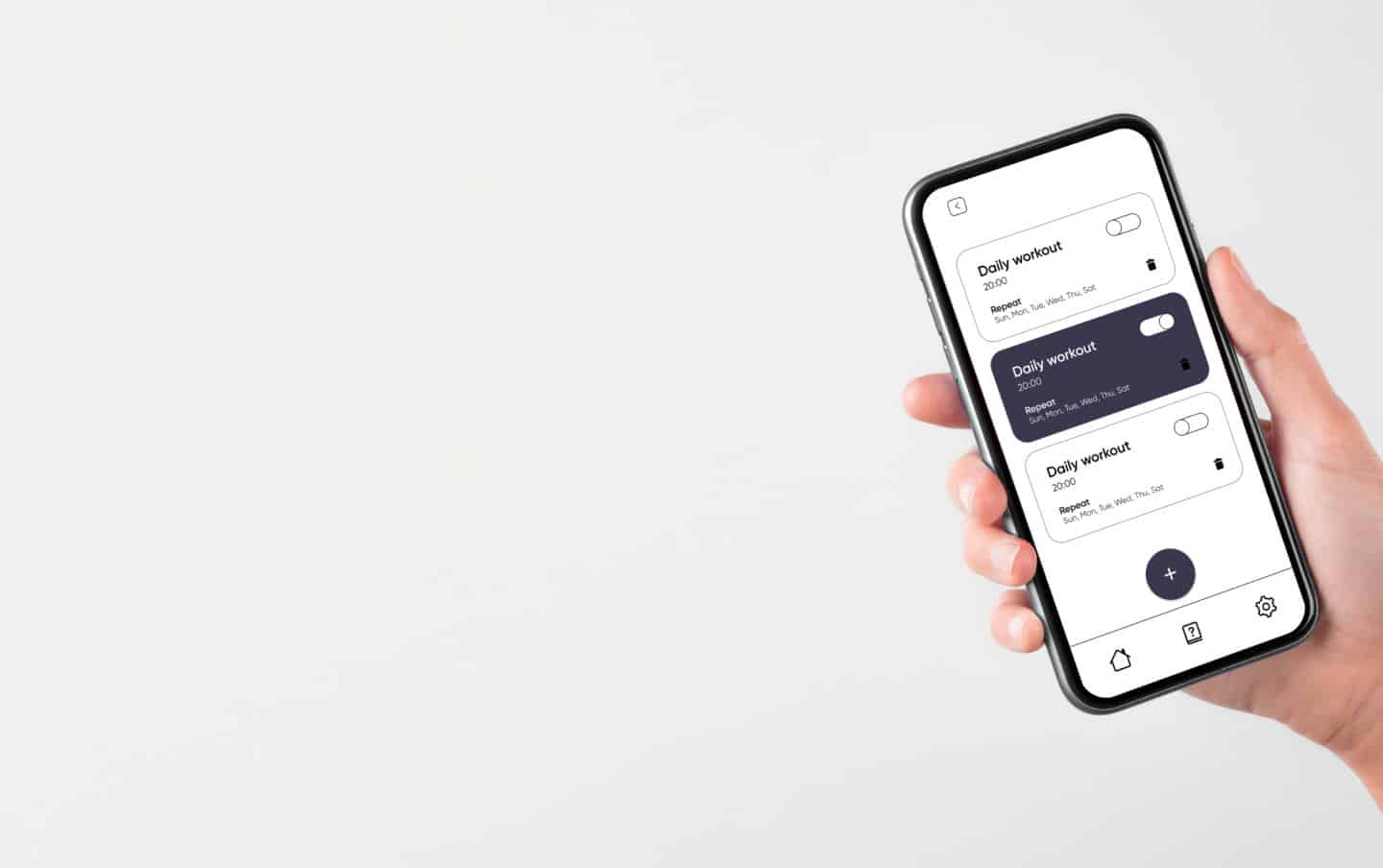It can take years to straighten your pearly whites and achieve that Hollywood smile. But is this arduous process worth it, you ask? Definitely.
Bimaxillary protrusion can be reversed, and here are a few things you can do about it.
🔎 Revealed on this page:
- 📖 A detailed description of bimaxillary protrusion.
- 💪How mewing can help with bimaxillary protrusion.
- 📝 Tips on how to treat this condition.
So, what can mewing do for you? Let’s see!

Bimaxillary Protrusion – Explained
Bimaxillary protrusion is a condition characterized by protruding upper and lower front teeth that push the lower jaw forward in a horizontal position. It usually causes separation of the lips at rest, a gummy smile, and an anterior open bite.
Bimaxillary protrusion affects the facial and smile aesthetics, but it can also complicate speech, nasal breathing, and overall oral health. The lip separation additionally worsens the situation by limiting forward growth and causing changes in facial development, such as crooked teeth.
The main causes include:
- Genetic bimaxillary protrusion. It has been noticed that this condition is predominant in certain populations, such as Asian communities.
- Tongue thrusting. When the tongue puts too much pressure inside the mouth, it pushes the teeth outward. It is a common bad habit among children, but it can continue into adulthood.
- Thumb sucking. This can cause malformations of the upper jaw and can push the front teeth into an almost horizontal position.
- Severe crowding. Having big teeth and small jaws can lead to severely crowded teeth and malocclusion.
How Mewing Works to Help You With Bimaxillary Protrusion
The mewing method (a type of myofunctional therapy) improves and gives the tongue a fantastic posture while allowing the maxilla to expand forward. With upward development and the expansion of the palate, the gap between the nose and the incisors closes.
Although Dr. Mike Mew is the public face of orthotropy, Prof. John Mew, his father, deserves much credit for creating the basis. He is the real originator of mewing and recommended proper tongue development and posture in the 70s.
So, mewing changes face shape by addressing all parts of it!
What to Expect
Since mewing is a DIY myofunctional therapy that helps with your bimaxillary protrusion, you should know it’s a slow-building process. From the moment you start doing the mewing work, you’ll have to keep up the tempo for weeks to see significant results.
As you know, mewing improves the placement of the tongue to shape the face. The mewing effects on jawline occur without surgery and will help you define your jawline to adopt a better facial structure.
The great posture of your neck, mouth, and chin will be accomplished without correction or plastic surgery. While mewing, you will learn how to correct your tongue posture, breathe through your mouth and nose, and develop a breathing technique. For more on tongue position importance while mewing, click here.
The evidence of mewing can be seen within 6 months of DIY myofunctional therapy, meaning mewing is a good habit to adopt! Nonetheless, bimaxillary protrusion mewing is a process that requires patience and completely depends on the person.
This means you must be able to create a habit and focus and manage the mewing exercises with ease to achieve proper resting position and a great posture of the lips. We have more information for you about how mewing affects lips.
Bimaxillary Protrusion Mewing Benefits
Mewing has been anecdotally demonstrated to alleviate bimaxillary protrusion, a biting disorder characterized by the form and location of the teeth, by gradually realigning the jaw and teeth. Many believe that it is a great substitute for surgery or more invasive medical treatments.
Also, bimaxillary protrusion mewing grants you to have forward facial growth to lose your double chin. This means your jaw will slightly grow forward and eliminate underbite problems in some cases.
Other Bimaxillary Protrusion Treatments
Besides mewing, you can reduce bimaxillary protrusion by inducing palate expansion and upward growth with any of the following methods:
Braces
Braces are the most common and effective way to fix protruding teeth. They help pull the teeth back into their proper position and align them. Bimaxillary protrusion can only usually be treated by the removal of 4 teeth if you’re using conventional braces, which many doctors still do.
Preventing Bad Habits
Bimaxillary protrusion can be successfully treated if a patient’s problems are thoroughly considered while developing a treatment plan. It is possible to prevent bad habits by using a thumb-sucking glove or an anti-thumb-sucking dental device. Gentle reminders are the best option for everyone.
Teeth Extraction
In cases of severe crowding, it is advisable to extract teeth and make space for the teeth to align properly. The upper or lower teeth may need to be extracted as part of the orthodontic therapy if the protrusion is merely teeth-related to make room for the necessary dental modifications.
Conclusion
Bimaxillary protrusion is a disorder characterized by protruding and proclined upper and lower incisors, as well as increased lip procumbent. Many individuals with bimaxillary protrusion seek orthodontic treatment to lessen this procumbency since protruding lips and teeth are seen negatively in most cultures.
The causes of bimaxillary protrusion are multifaceted and include genetics and environmental variables, including tongue volume, tongue and lip habits, and mouth breathing.
If you haven’t started mewing yet, you should know it can vastly help with bimaxillary protrusion and its physical aftermath. So, consult your orthodontist for anything you should know before you get started, and you can begin right away!





